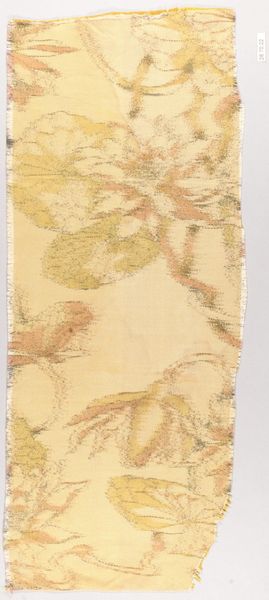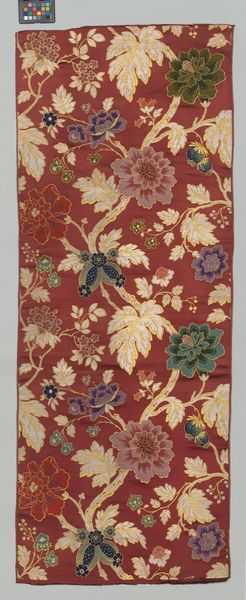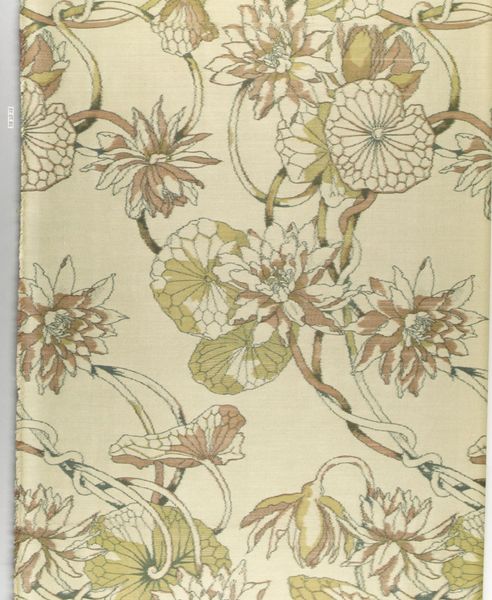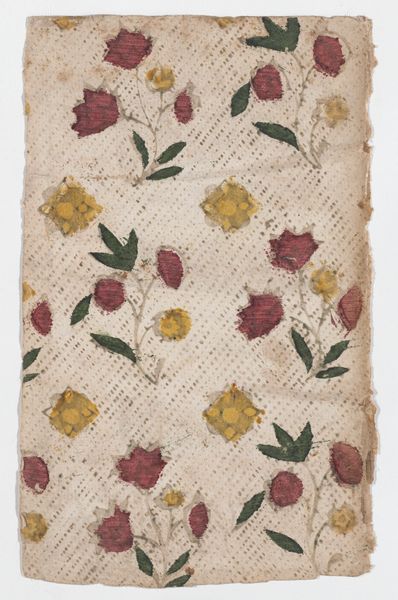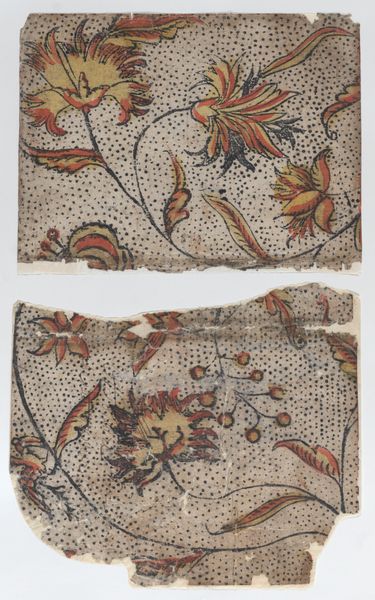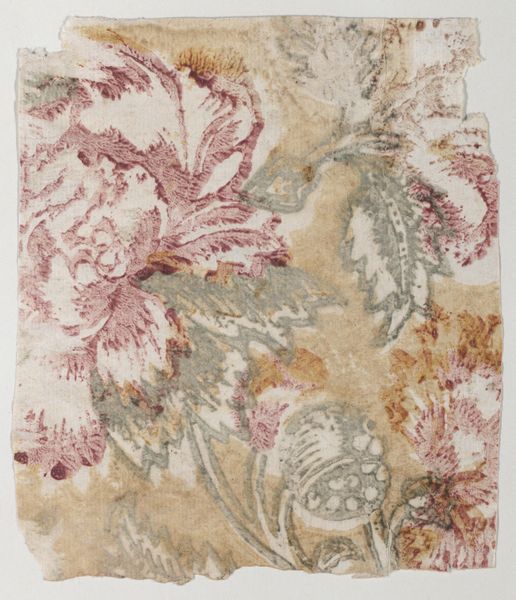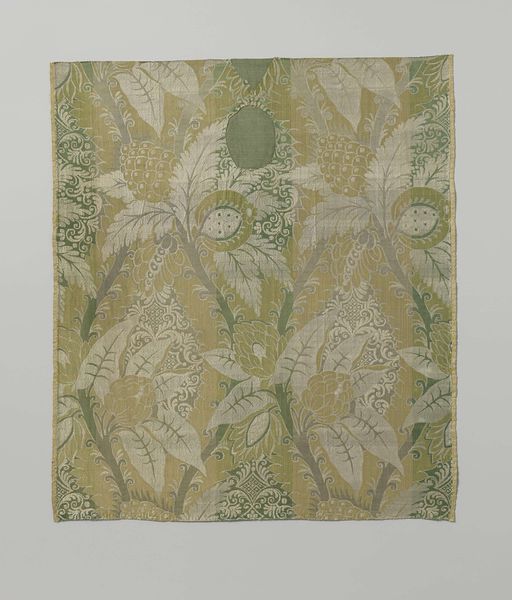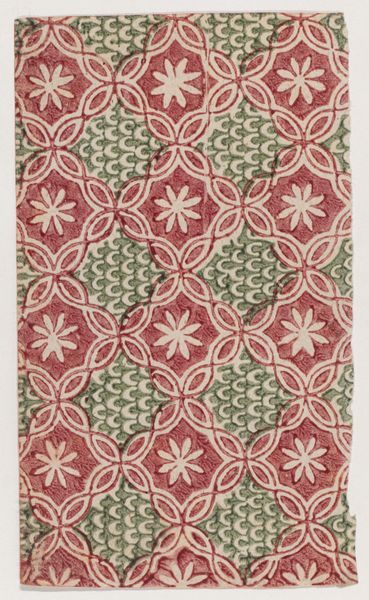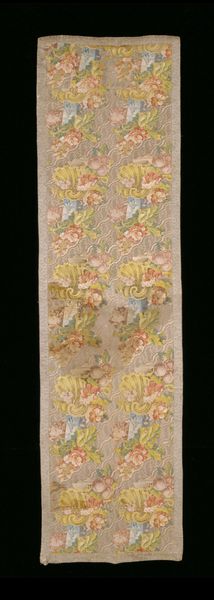
weaving, textile
#
organic
#
arts-&-crafts-movement
#
pattern
#
weaving
#
textile
#
flower
#
pattern background
#
organic pattern
#
united-states
#
watercolor
Dimensions: 26 1/2 x 8 1/4 in. (67.3 x 21 cm)
Copyright: Public Domain
Editor: This textile, entitled "Water-lily textile," was created between 1883 and 1900 by Associated Artists, and is now at the Metropolitan Museum of Art. The subdued palette makes me think of a cloudy day at the pond, but it is the crisp geometric stylization that arrests my gaze. What do you see in this piece? Curator: The systematic deployment of color and form yields a piece exemplary of its era. Note the flattening of space, subordinating depth to surface design. How does this prioritization of the picture plane speak to you in regards to semiotic considerations, considering both denotative and connotative interpretations? Editor: I think that it looks pretty, but honestly I'm not sure I follow. I mean the organic forms and muted colours makes it look…natural, so it is definitely not as flat as, say, a Frank Stella painting, which has even less depth and visual cues to three-dimensional form. I can grasp what you mean that it wants to be decorative first and foremost, though? Curator: Precisely. While naturalistic elements are present, they are undoubtedly mediated through the formal language of pattern. The interplay between representational form and abstract design creates tension—observe how the curvature of the lilies is regimented, resulting in decorative effect over naturalistic portrayal. This manipulation reveals underlying structural principles. Do you observe any overt geometry in the way forms assemble on the whole? Editor: Now that you mention it, the overlapping repeats create triangular areas, giving a pyramid-like feel. It really creates depth when you analyze those shapes that might get lost if you simply viewed the image in passing, thank you. Curator: A keen observation, which in turn can shed light on structural and signifying elements throughout this design. A clear demonstration of design as deliberate construction. Editor: Okay, I understand now! Thinking about structure encourages me to keep asking new questions.
Comments
No comments
Be the first to comment and join the conversation on the ultimate creative platform.
